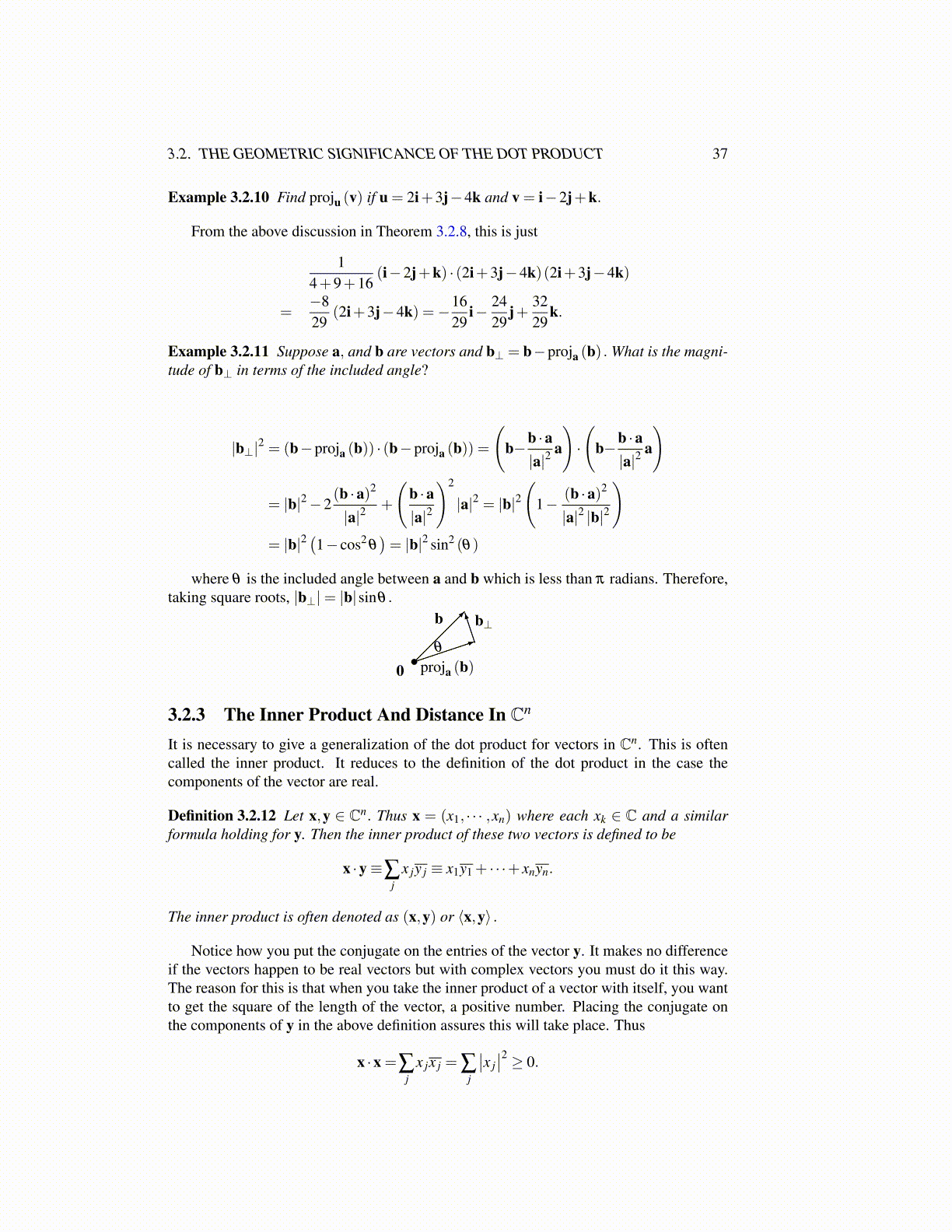
3.2. THE GEOMETRIC SIGNIFICANCE OF THE DOT PRODUCT 37
Example 3.2.10 Find proju (v) if u = 2i+3j−4k and v = i−2j+k.
From the above discussion in Theorem 3.2.8, this is just
14+9+16
(i−2j+k) · (2i+3j−4k)(2i+3j−4k)
=−829
(2i+3j−4k) =−1629
i− 2429
j+3229
k.
Example 3.2.11 Suppose a, and b are vectors and b⊥ = b−proja (b) . What is the magni-tude of b⊥ in terms of the included angle?
|b⊥|2 = (b−proja (b)) · (b−proja (b)) =
(b−b ·a|a|2
a
)·
(b−b ·a|a|2
a
)
= |b|2−2(b ·a)2
|a|2+
(b ·a|a|2
)2
|a|2 = |b|2(
1− (b ·a)2
|a|2 |b|2
)= |b|2
(1− cos2
θ)= |b|2 sin2 (θ)
where θ is the included angle between a and b which is less than π radians. Therefore,taking square roots, |b⊥|= |b|sinθ .
b⊥
•
b
0θ
proja (b)
3.2.3 The Inner Product And Distance In Cn
It is necessary to give a generalization of the dot product for vectors in Cn. This is oftencalled the inner product. It reduces to the definition of the dot product in the case thecomponents of the vector are real.
Definition 3.2.12 Let x,y ∈ Cn. Thus x = (x1, · · · ,xn) where each xk ∈ C and a similarformula holding for y. Then the inner product of these two vectors is defined to be
x ·y≡∑j
x jy j ≡ x1y1 + · · ·+ xnyn.
The inner product is often denoted as (x,y) or ⟨x,y⟩ .
Notice how you put the conjugate on the entries of the vector y. It makes no differenceif the vectors happen to be real vectors but with complex vectors you must do it this way.The reason for this is that when you take the inner product of a vector with itself, you wantto get the square of the length of the vector, a positive number. Placing the conjugate onthe components of y in the above definition assures this will take place. Thus
x ·x =∑j
x jx j = ∑j
∣∣x j∣∣2 ≥ 0.